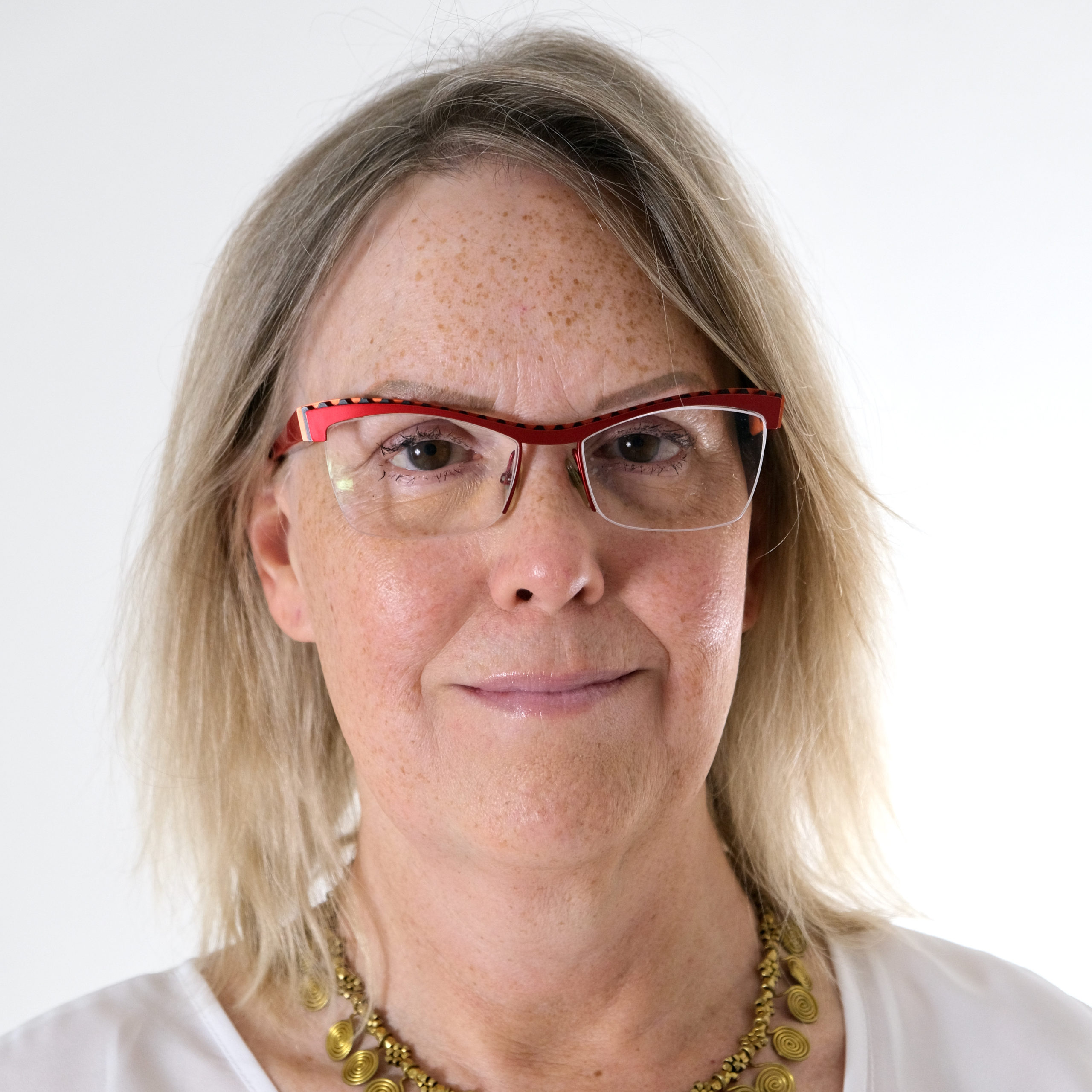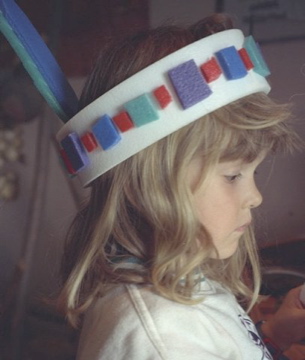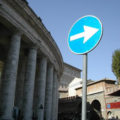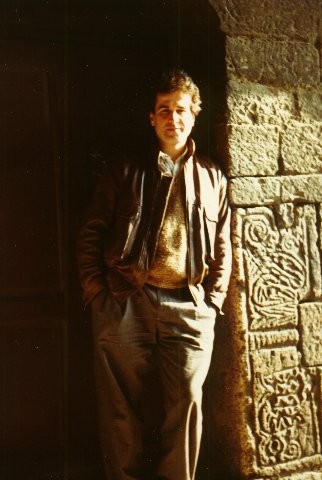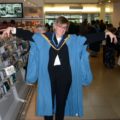Growing up in Bangladesh and India, I observed that every scrap of paper, or anything else potentially useful, was re-used. Peanuts bought from a roadside stand were given to me in a little bag, carefully handmade from a page of a Singapore telephone directory. At school, the kabadi-wallahs (second-hand men) would come around collecting paper, cloth, and tins, for which they would pay by the kilo. This meant that our school papers and love letters could (embarrassingly) turn up as bags in the bazaar; we took great care to burn anything that we wouldn’t want anyone to read.
Woodstock School and its environment encouraged thrifty habits. There simply wasn’t a lot of stuff to buy, let alone throw away. Sometimes even the basics, like electricity and water, went missing. In a drought year (the spring and summer after a failed monsoon), power frequently went out because there was no water in the mountain rivers to generate hydroelectricity. Studying by candlelight sounds romantic for Abraham Lincoln, isn’t so great in real life. (Woodstock now has generators, and uninterruptible power supplies for its computers.)
Then the local springs dried up, and we had no water to take showers or even flush toilets. Servants would bring up water from a rainwater tank, and we flushed using buckets. Nowadays, although I love taking hot baths, I always wince at the water left in the tub afterwards, wasted. In our previous (small) apartment, the bucket used for mopping the floors lived under the bathroom sink, so I would simply leave the water in the tub, and flush with that water until it ran out or we needed to drain the tub to take showers. I have had to explain this habit to people who couldn’t understand why I do not reflexively pull the plug after a bath. I’d like a house designed to use bath and shower water to flush toilets.
India’s recycling habits meant that there was very little trash on the Mussoorie hillsides, until recent years when plastic shopping bags and packaging became popular. Suddenly, the garbage bloomed. I suppose increasing wealth (for some) also meant that people were less careful, because plastic bags weren’t the only thing being thrown away. Dick Wechter, a Woodstock staff member keenly interested in mountain environmental issues, found a solution. He paid local sweepers (untouchables, the poorest of the poor) to collect trash from the hillsides, which they sold to the kabadi-wallahs, in the end making more than enough money to pay the collectors’ salaries. Dick has also been promoting the use of biodegradable paper bags or reusable cloth bags for shopping, and composting wet waste.
Italy was becoming recycling-conscious just about the time we got here (1991). It started with glass, which you would put into a large plastic bell, usually located on a traffic island or sidewalk within a block or two of your home. The bell had little round portholes near the top, into which you would push one bottle at a time, dropping it with a satisfying crash to the bottom. Once a month or so the glass truck would come along. It had a miniature crane on the back, with a hook which would pick up the bell by a loop of steel cable sticking out of its top. The crane would swing the bell over the open bed of the truck, and then a second hook would pull a second loop which opened the bottom of the bell – MEGA CRASH as hundreds of glass bottles fell. This was a less pleasing sound, especially at 6 am.
A little later, paper recycling bins turned up on the streets as well, though they were sometimes set on fire by vandals. Then plastic. For a while, in Milan, we had to separate out “humid” (organic, compostable) garbage into special containers and biodegradable bags, but the Comune of Milan gave that up when it was found to cost more to make it into fertilizer than farmers were willing to pay for it. A couple of years ago, Milan’s sanitation authority also moved recycling closer to home, by putting bins for paper, plastic, and glass into the courtyards of apartment buildings. This was a good idea, but the execution was confusing. Aluminum (soft drink) cans were supposed to be placed with glass; I never did figure out what to do with other kinds of cans. Some kinds of plastic could be recycled, others not. The city also tried to increase recycling rates by fining anyone who messed up. In a building complex with hundreds of people, this meant fining the entire complex, since no individual culprit could be identified. One irritated resident of a fined building noticed that sometimes the garbage men themselves weren’t fussy: he photographed a truck loading both recyclable and general garbage into the same compartment, clearly wasting the public’s efforts at recycling.
Lecco was up for an award last year as one of the most recycling cities in Italy, and I can see why. We have three bags: umido (compostable “wet” waste), sacchetto viola (violet bag, for plastic, paper, cardboard, wood), and sacchetto trasparente(transparent bag – non-recyclable). I assume that the stuff in the sacchetto viola is hand-sorted somewhere along the way, which is more sensible than trying to make confused old ladies do it at home. I recycle even more paper now that I don’t have to tear the plastic windows out of envelopes and food cartons. We have separate (small) garbage bins under the sink for umido and general garbage. Glass, unfortunately, still has to be carried to a bin down the road. We collect it into a plastic container out on the balcony, and every now and then Enrico takes a walk with a big bag of glass.
The plastic shopping bag problem is somewhat mitigated in Italy by the simple expedient that supermarkets charge 5 cents each for them. So people tend to take fewer of them (I am always left gasping at the profligacy with which American supermarkets bag groceries), and/or bring re-usable bags of their own. Also, kitchen garbage pails are small enough that these bags can be used to line them, saving the expense of buying garbage bags. You have to take the garbage out more often, but you can take it anytime, down to a trash room in your building, where the people responsible for cleaning the building will get it out to the street on the correct day for collection.
Jan 10, 2004
Mike Looijmans writes:
“In Belgium it is very common to collect rain water (usually from the roof) in an underground tank, and use this water for things like flushing toilets, washing and so. In many Belgian places, tap water is not drinking water but usually untreated ground or rain water. ‘Clean’ water for cooking and drinking is usually provided from separate taps.
In the Netherlands, all tap water is drinking water. In the east and south of the country, the water is taken from underground wells and is the same stuff which is sold in bottles at exorbitant prices in supermarkets. In fact, some types of bottled water sold internationally would not pass the Dutch criteria for tap water. Though it sounds like a terrible waste to use this water for car washing and such, the water as it is pumped up from the ground needs very little treatment, just filtering out the sand is usually enough. The water companies use trout to monitor the quality. A trout swimming in the water stream is monitored by a computer system. When the fish makes a sudden movement, alarm bells start ringing as these fish are very sensitive to pollution.”

